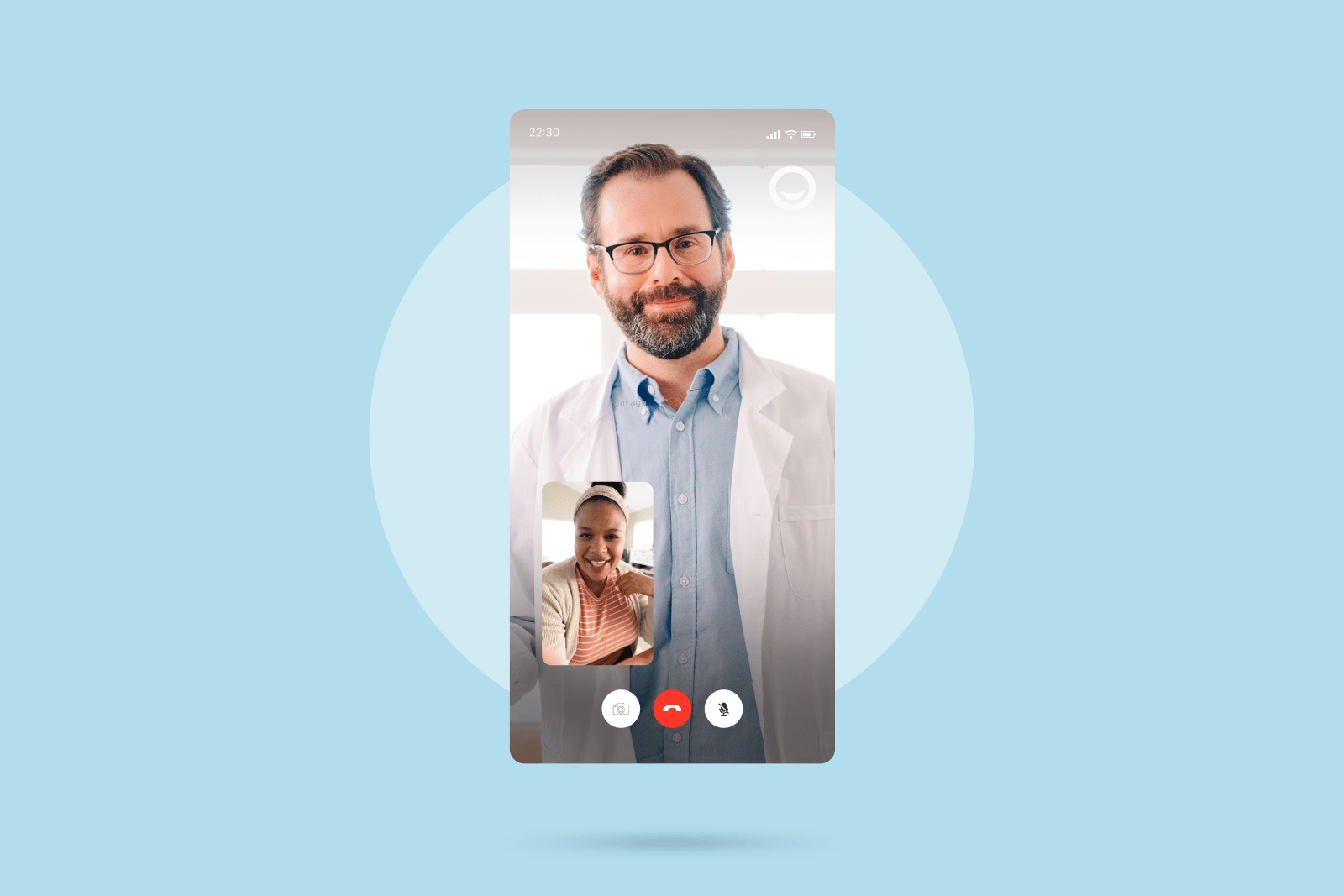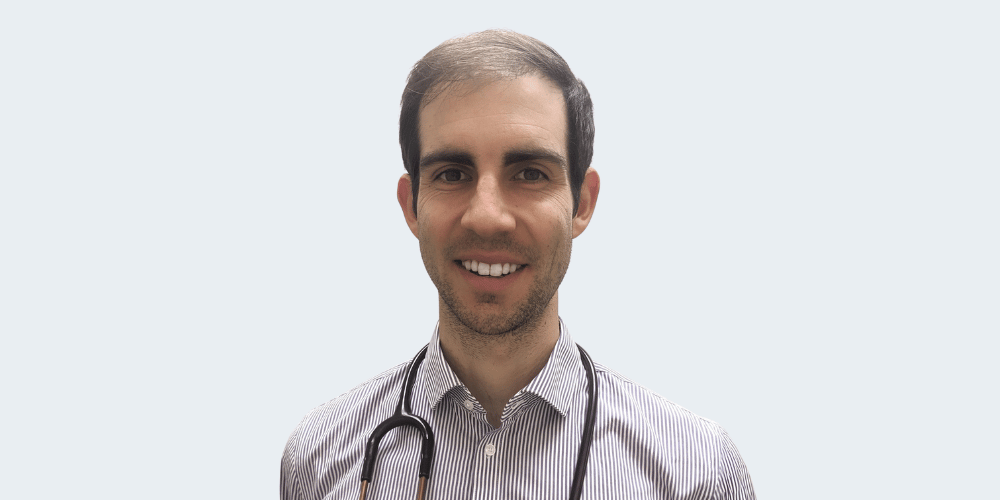
Prescription lice treatment online: same-day medication
Quickly get a prescription for lice treatment medication! Chat with a board-certified primary care doctor online to get the prescription you need to get rid of lice. Get a new prescription or refill an existing one today.*

*Prescriptions are provided at the doctor's discretion. Learn more about our controlled substances policy and how to save up to 80% with our prescription discount card. PlushCare doctors cannot treat all cases of lice. Our primary care physicians can conduct an initial evaluation of your symptoms but may need to refer you to a specialist or for in-person treatment. If you are experiencing life-threatening symptoms, seek emergency medical attention immediately.
Learn about lice
Lice usually spread through direct transfer from the hair of one person to the hair of another. Contrary to popular belief, lice aren't a sign of poor personal hygiene or uncleanliness. Lice treatments and hair products can help treat head lice and prevent infestations from spreading.
Lice causes
Head lice are highly contagious, and you can quickly develop a lice infestation if the insects crawl onto your head. Lice can spread through:
-
Close contact (head-to-head contact) with someone who has lice
-
Sharing personal items, such as hairbrushes, with someone who has lice
-
Using fabric items, such as hats or clothing, after someone with head lice
Head lice move by crawling, and they cannot hop or fly. Anyone who comes into head-to-head contact with another person who already has lice is at the greatest risk. Poor personal hygiene and uncleanliness do not increase a person's risk of getting head lice.
Lice symptoms
The most common symptom of lice is itching, especially around the back of your head and neck—areas where lice are more likely to live. You might also experience:
-
A tickling feeling or sensation that something is moving in your hair
-
Irritability and difficulty sleeping since head lice are most active in the dark
-
Small red bumps on your head, neck, ears, and shoulders
-
Sores on your head due to excessive itching
Sometimes, head sores can become infected due to the bacteria found on your skin. Avoid scratching as much as possible and keep an eye on your symptoms. Swollen lymph nodes, tender skin, and crusting may indicate a skin infection.
How to treat lice
Several treatment options are available for head lice. Most treatments only need to be used twice. The second treatment, which usually comes a week after the first treatment, helps kill any newly hatched nits.
Effective treatments for head lice include:
-
Medication: Both over-the-counter and medicated hair treatments can help kill lice. To avoid potential side effects, avoid using more than one medication to treat head lice. In addition, make sure to use your medication as directed.
-
Manual removal: If you want to avoid pesticides, you can use a fine-toothed comb to remove lice manually. Apply olive oil to your hair before combing to pick up more lice and nits.
Lice medications
Both over-the-counter and prescription drugs can help treat head lice. Over-the-counter lice treatment typically includes two types of chemicals: pyrethrin and permethrin.
In some areas, lice have developed resistance to OTC medications. If you still have lice after applying an OTC treatment you may be prescribed:
How to prevent lice
To prevent head lice from spreading, you should:
-
Avoid sharing combs, scarves, hats, and hair brushes with other people
-
Avoid lying on beds, couches, or pillows that have been used with someone who has lice
-
Avoid direct head-to-head contact with someone who has lice
When to see a doctor for lice
Talk to your doctor if over-the-counter medicines don't work with proper use or if you notice any symptoms of an infection. Common symptoms of an infection include:
-
Fever
-
Head sores that ooze or crust
-
Pain or tenderness on your head
-
Redness or swelling on your scalp
Lice treatment FAQs
What are the symptoms of lice?
The primary symptom of lice is an itchy scalp. You may also experience:
-
A tickling sensation or the feeling of something moving through your hair
-
Irritability or difficulty sleeping
-
Small red bumps on your head, ears, neck, and shoulders
-
Head sores from excessive itching
You might also notice lice or lice eggs (nits) on your hair shaft. Although lice can resemble dandruff, they aren't easily brushed out of the hair.
How did I get lice?
After coming into contact with lice or lice eggs, lice can crawl onto your hair and lay eggs. Lice cannot hop or fly.
How do you get rid of lice?
Eliminating lice involves three steps:
-
Kill the lice using an over-the-counter or prescription treatment.
-
Clean your home to lower your risk of another infestation. Make sure to wash bed sheets in hot water, vacuum any carpets, and seal objects you can't easily wash (like knit hats) in a plastic bag for two weeks.
-
A week after your first treatment, apply a second lice treatment to get rid of any eggs.
If you still notice lice symptoms after applying an over-the-counter treatment, contact your doctor. If needed, your doctor can prescribe prescription-strength lice treatment online in the form of medicated shampoos or lotions.
How do I avoid lice?
The best way to avoid lice is by avoiding direct contact with other people who have lice.
Lice are common in school-age children, and it's not always possible to prevent lice. However, you can teach your kids to practice the following preventive measures:
-
Don't share personal belongings, such as clothes or hats.
-
When possible, hang clothes, hats, and scarves on separate hooks.
-
Avoid head-to-head contact with other people (in gym class, on the playground, or during sports).
What's the best prescription lice shampoo?
How to get a prescription for lice?
Is there prescription-strength lice treatment?
What are the best prescription medications for head lice treatment?
The best prescription lice treatments include the following shampoos and lotions:
-
Lindane (Kwell)
-
Spinosad (Natroba)
-
Malathion (Ovide)
-
Ivermectin (Sklice)
-
Benzyl alcohol (Ulesfia)
3 simple steps to get treated for lice today

Book a lice treatment appointment.

Talk to your medical provider regarding your lice symptoms.

Pick up a prescription for lice.
Lice treatment pricing details
30 days of free membership
- Same-day appointments 7 days a week
- Unlimited messages with your Care Team
- Prescription discount card to save up to 80%
- Exclusive discounts on lab tests
- Free memberships for your family
- Cancel anytime
Paying with insurance
Membership
$19.99 /month
First month free
Visits
Copay
Visit price with insurance
Often the same as an office visit. Most patients with in-network insurance pay $30 or less!
We accept these insurance plans and many more:



Paying without insurance
Membership
$19.99 /month
First month free
Visits
$129
Visit price without insurance
Related conditions to lice
Lice treatment resources:
Sources:
PlushCare is dedicated to providing you with accurate and trustworthy health information.
-
Centers for Disease Control and Prevention. About Head Lice. Accessed on June 18, 2024. https://www.cdc.gov/lice/about/head-lice.html?CDC_AAref_Val=https://www.cdc.gov/parasites/lice/head/index.html
-
Mayo Clinic. Head lice. Accessed on July 25, 2022. https://www.mayoclinic.org/diseases-conditions/lice/symptoms-causes/syc-20374399
-
Nemours Kids Health. Head Lice. Accessed on July 25, 2022. https://kidshealth.org/en/parents/head-lice.html
PlushCare content is reviewed by MDs, PhDs, NPs, nutritionists, and other healthcare professionals. Learn more about our editorial standards and meet the medical team. The PlushCare site or any linked materials are not intended and should not be construed as medical advice, nor is the information a substitute for professional medical expertise or treatment.